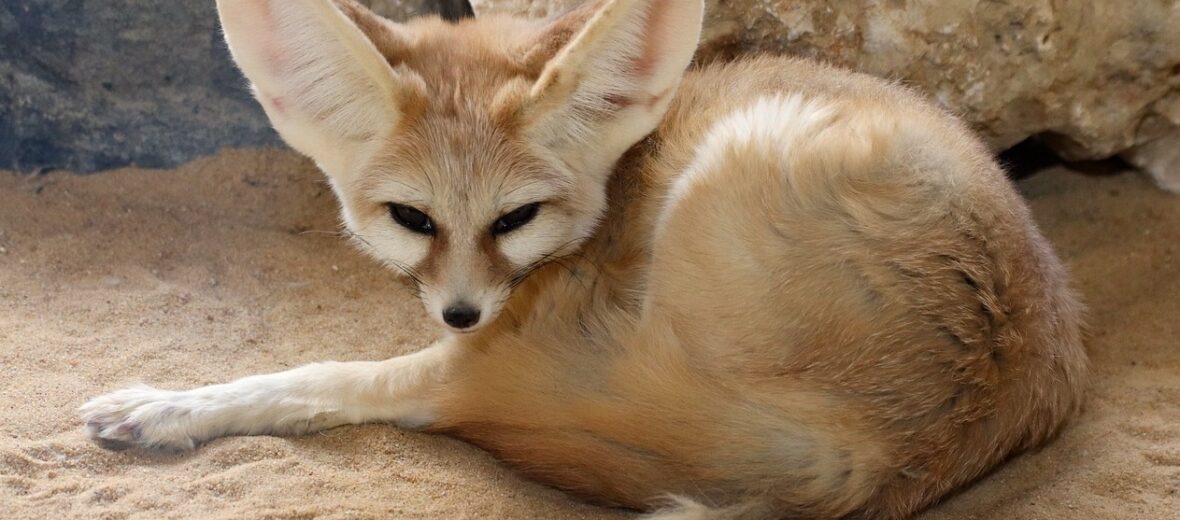
These cute little foxes are called the fennec fox. They live in the Northern part of the Sahara desert and are the smallest member of the canid family. They lack musk glands, and are very social animals. These diminutive foxes tout the largest ears of any fox and are the size of a small cat or large kitten. The fennec fox is listed as Least Concern by the IUCN.
First the Stats…
Scientific name: Vulpes zerda
Weight: Up to 3.5 lbs
Length: Up to 16 inches, plus a 12 inch long tail
Height: Up to 8 inches
Lifespan: Up to 12 years
Now on to the Facts!
1.) Those huge ears of theirs serve a dual purpose. They give the fennecs fantastic hearing for predators and prey and they also help to vent heat from the fox’s body, which aids in cooling them down.
2.) These foxes are monogamous (mate for life).
3.) The fennec fox has really furry paws. This helps keep them from burning their feet in the hot desert sand.
4.) Fennec foxes yield just 2 – 5 kits a year and the kits stay with mom and dad, even when a new litter is born.
5.) Fennecs live in groups of as many as 10+ individuals, although this size can vary based on the availability of food.
But wait, there’s more on the fennec fox!
6.) The fennec foxes are so totally adapted to desert life that they are able to live without drinking water. Instead, fennec foxes gain most of their water from the roots, fruits, leaves, eggs, and prey animals they eat.
7.) The fennecs are nocturnal (active at night). This helps them avoid the daytime heat and most predators.
Did you know…?
A fennec can jump up to 2 feet in the air!
8.) Fennec foxes are omnivores (they eat plant and animal matter).
9.) Fennec foxes can be kept as pets! They do require special attention, experience, socialization, and dietary needs though.
10.) They can make numerous sounds to communicate: barks, howls, chatters, squeaks, growls, shrieks, and whimpers.
Now a Short Fennec Fox Video!
Also, check out the Critter Science YouTube channel. Videos added frequently!
Want to suggest a critter for me to write about? Let me know here.



